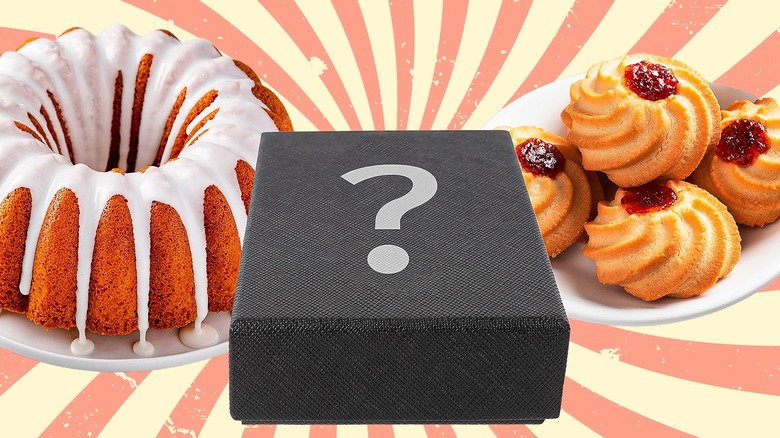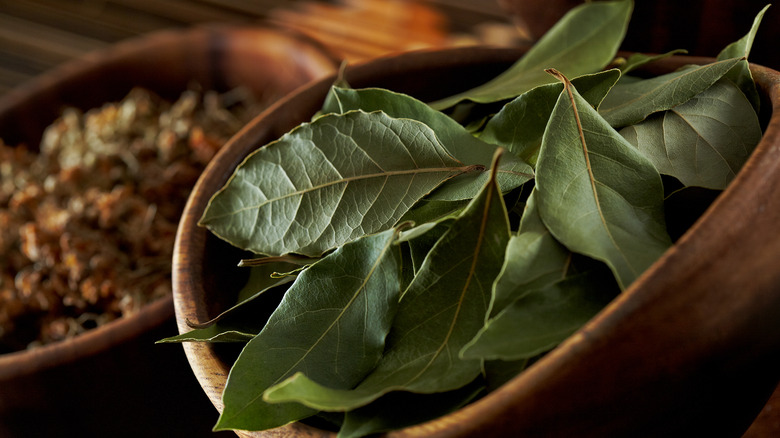The Unusual Ingredient You Should Start Adding To Baked Goods
When you're gathering supplies to whip up some baked goods, chances are you reach for the standard vanilla, sugar, and flour — maybe you grab some warming spices like cinnamon and nutmeg to add a little extra oomph. However, there's one unusual ingredient you shouldn't overlook when it comes to crafting baked goods with serious depth of flavor: bay leaves. Yes, those dried-out leaves that you've probably shoved to the back of your spice collection and only reach for when you're making the occasional savory recipe that requires them.
You can tell from the unique aroma alone that they'll add something special to your dessert, as bay leaves have a unique taste that blends notes of balsam, honey, nutmeg, clove, and eucalyptus. The flavor is as complex as the aroma, with the herb adding a floral and earthy element to your dessert. And while you can purchase ground bay leaves, they can easily become overpowering in that format, with a mere ½ teaspoon required to flavor an entire dish. To avoid that risk, especially with desserts that have a more subtle flavor profile, opt for whole bay leaves. They can take everything from panna cotta to pound cake to the next level — the trick is knowing how to use them well.
How to use bay leaves in your dessert
Since most recipes incorporating bay leaves call for them to be removed before serving, you may be wondering if you can even eat them. The answer is technically yes — although you probably don't want to consume the leaves directly. Bay leaves are generally incorporated whole and then removed before the dish is served because they don't soften when cooked, and can consequently be unpleasant to eat. Just as you'd let your bay leaves linger in your simmering stew, the infusion-style approach is perfect for desserts. You can infuse whipped cream, milk, or any other liquid you're using with bay leaves and then use that aromatic, herbal component to elevate whatever dessert you're making.
If you find they didn't really add any extra flavor, make sure your herbs are reasonably fresh and that it's not time to throw your bay leaves out and grab a new pack from the store. How can you tell? Simple: Snap one of them in half and take a big whiff. A bay leaf that will actually infuse flavor into your dessert should release that signature herbaceous aroma. If you don't think you'll use the leaves up very quickly, consider storing them in the freezer. They can last up to three years and will remain fresh much longer, so they'll be ready the next time you want to whip up dessert with a twist.

